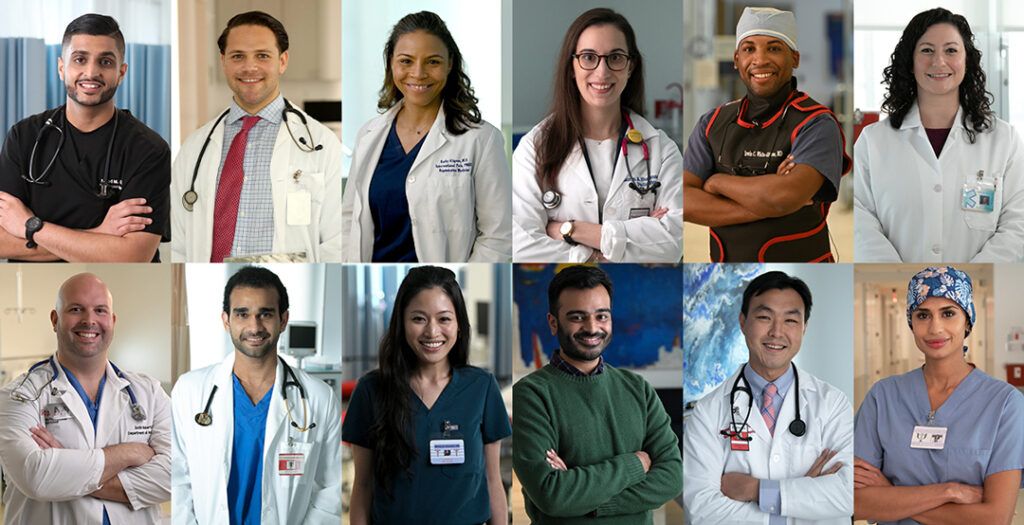While undoubtedly rigorous, the path to becoming a doctor is relatively straightforward with major milestones including:
- earn a bachelor’s degree
- take the Medical College Admission Test (MCAT),
- complete medical school and residency
- pass your USMLE licensure exams
But even if you have that to-do list sorted out, it might seem like the process doesn’t really begin until you’re in college. As a high school student, you’re likely wondering what you can be doing now to set yourself up for success in medical school and beyond.
If you have hopes of becoming a doctor after high school, read on for some steps you can take before graduating.
4 Things you can do in high school to become a doctor
Not every physician path to becoming a doctor early in life. But since you’ve already marked this goal for yourself, you have the advantage of beginning your preparation early.
If you want to become an attractive candidate for medical school, here are four things you can do before you earn your high school diploma:
1. Lay the foundation for academic success
It’s important, even as a high school student, to maintain a strong GPA if you hope to one day get accepted into med school. But achieving high grades shouldn’t be your only focus.
There will be a number of medical school prerequisites you’ll be expected to complete before you eventually apply to Doctor of Medicine (MD) programs. With this in mind, it’s smart to take high school classes recommended for pre-med majors if you have the capacity to do so. If possible, seek out advanced courses in biology, chemistry, physics, mathematics, and even English—effective communication is crucial to doctor-patient care.
2. Volunteer at a local hospital or healthcare facility
Amassing volunteer hours in a healthcare setting doesn’t just look good on college and medical school applications. It can give you an opportunity to learn what’s required to care for others, no matter how simple your duties may be.
This type of exposure can be critical in helping you solidify your choice to pursue a career in medicine. Physicians will be the first to tell you that the duties of their jobs can be physically, mentally, and emotionally taxing. But, for many, the opportunity to make a difference in the lives of others is more than enough motivation for them to overcome the challenges they encounter on the job.
3. Shadow a physician
As a volunteer, you’ll get exposure to what it’s like working in a healthcare environment. But by shadowing a doctor in high school, you can gain valuable insight into clinical care, observing the doctor-patient relationship firsthand. When shadowing a physician, you’ll get to observe the practitioner as they perform their clinical duties, giving you a clear picture of what day-to-day practice may be like.
This is considered an essential experience for pre-med students—and finding opportunities to do so may not be as intimidating as you think. Most physicians are eager to lend insight to the next generation of doctors.
For advice on this topic, visit our article “How to Shadow a Doctor: 6 Tips for Success.”
4. Participate in community health events
Doctors dedicate their careers to preserving the health and wellness of their communities. In doing so, they interact regularly with patients from all walks of life. It’s immensely important to know the community you treat.
If you have the opportunity to lend a hand at local community events like blood drives or health fairs, it’s a good idea to do so. Once again, this kind of proactive participation is something admissions committees love to see on an application. But you can also gain some valuable experience in patient education, cultural competence in healthcare, and more.
Other Questions You Might Have
As you plan for your future as a physician, the more proactive you can be, the better. You might also have more questions about the pathway to become a physician.
How many years of medical school to be a doctor?
Anyone who has completed an undergraduate degree with usually attend medical school for four years. The first two years are usually classroom-based curriculum, that covers basic medical sciences. The last two years involve clinical rotations in various medical specialties.
How many years to become a doctor?
If you consider the two components of medical education and practical training, becoming a doctor can take at least 10 years to become a fully licensed and practicing physician.
After completing your MD, residency programs can range from 3 to 7 years, depending on the specialty. For example, family medicine might require a 3-year residency, while more specialized fields like neurosurgery can require up to 7 years.
Are there other pathways to become a doctor?
You may also be interested to learn that some MD-granting institutions offer dual BS/MD preclinical pathways St. George’s University (SGU) offers entry points for students from any education system around the world—including a four-year program for those entering with a traditional baccalaureate degree, and five-, six-, and seven-year MD tracks for those entering with other undergraduate degrees.
For example, offers a seven-year MD track in which students may be eligible to earn a Bachelor of Science on their way to completing their Doctor of Medicine degree.
If you’re intrigued by the prospect of completing your undergraduate degree sooner so that you can begin working on your MD, learn about SGU’s 7-Year MD Track.
This article was originally published in 2021. It has since been updated to include information relevant to 2023.


